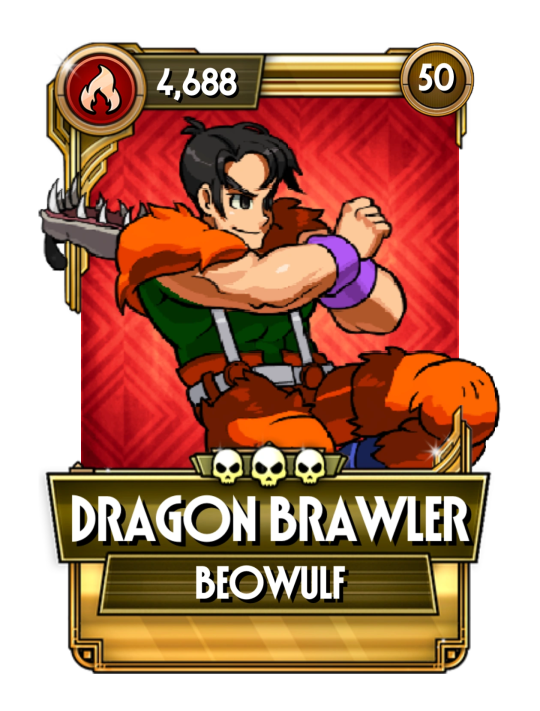#thankyoutoriyama
Text
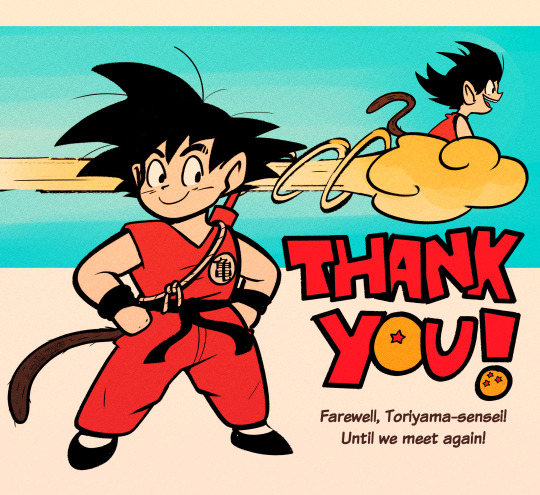
FLY-HIGH! TO THE NEXT BIG JOURNEY! REST WELL AKIRA TORIYAMA.
#wonderwaffleart#dragon ball#son goku#digital art#fan art#akira toriyama#toriyama#toriyama sensei#goku#tribute art#rip akira toriyama#thankyoutoriyama
3K notes
·
View notes
Text
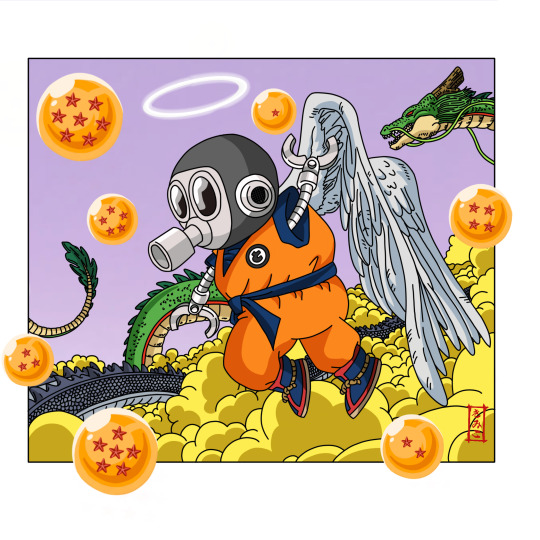
1955-2024
R.I.P. Toriyama Akira. 🕊❤️
There are no words. We have all lost a true legend. Dragon ball will never be the same again. Thank you for sharing this wonderful world with us.
#thankyoutoriyama#dragonball#toriyama#dragonballsuper#dragonballz#anime#dragonballgt#dragonballdaima#sandland#AkiraToriyama#ToeiAnimation#MANGA#Toyotaro#goku#vegeta#gohan#trunks#frieza#caulifla#art#drawing#db#dbs#dbsuper#dbz#gbgt#dbzfans#dbzart#ultrainstinct#dragonquest
61 notes
·
View notes
Text
Daydream Generation: The Lasting Legacy of Akira Toriyama's Work
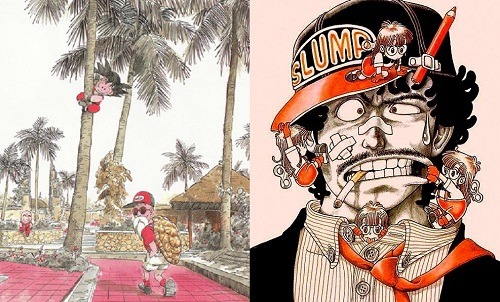
Here on AcquiredStardust we don't talk about anime enough and we wish that beginning to rectify this could've come under better circumstances. Just what is the Daydream Generation anyway? Join Ash as she attempts the impossible task of summarizing the importance of the 'god of manga' Akira Toriyama after his passing earlier this month in this special tribute.
Late Thursday night news finally broke on social media that beloved manga author Akira Toriyama had passed away several days before, prompting an immediate outpouring of grief the world over. Many of us feel a deep sense of loss in a way unimaginable before his work achieved the level of cultural penetration and ubiquitous veneration that it has, and it is impossible to overstate the singular importance he had in shaping our modern culture.
Responsible for hit manga Dr. Slump and Dragon Ball which quickly found themselves at the forefront of the Japanese pop culture renaissance of the Showa period, Toriyama's work is possessed of a rare combination of an earnest childlike wonder and adventure that is perfectly serviced by an instantly recognizable art style that is something of a rite of passage to for budding artists to imitate. It is in that Showa boom period that the Daydream Generation, a term coined by Toriyama disciple Yoshihiro Togashi's Yu Yu Hakusho particularly as the title of its 5th ending theme, is forged.
It is no overstatement to refer to Akira Toriyama as "the god of manga", and in fact he is referred to as such by Masashi Kishimoto of Naruto fame. It is Kishimoto's generation, coming of age in the Showa era in which Toriyama produces his most significant works, that finds themselves first so captivated by it. Although anime is in the middle of a golden age by the time Toriyama's work is published (lead perhaps most by Leiji Matsumoto of Galaxy Express 999/Captain Harlock fame and Mobile Suit Gundam visionary Yoshiyuki Tomino), Toriyama's work forges a connection with Japanese readers in a way that other work hasn't quite in the same way.
Perhaps it is the clean linework, deceptively simplistic and stylish all at once. Perhaps it is the expressive characters often named with clever puns or food related names. Perhaps it is familiar cultural touchstones and elements of comedy and parody rolled seamlessly into each other. Perhaps it is the refinement in elements popularized by contemporary works like Ring ni Kakero such as the frequent use of tournaments as a framing for the plot Perhaps it is the rare ability for Toriyama to create characters that often appeal equally to male and female readers without either demographic rejecting them, feat only rivaled with any real frequency by authors Rumiko Takahashi and Hiromu Arakawa.
Regardless of the cause, the strong creative voice and earnestness that shines through Dr. Slump and Dragon Ball does something special for children of the Daydream Generation: it makes the job of creating manga seem more attainable than other works of the time do. It gives a generation of children the ability to dream, some for the first time, of their own works. It is in the immediate wake of these works that authors such as Masashi Kishimoto, Yoshihiro Togashi, Tite Kubo and Eiichiro Oda come of age and dream of their own works in direct inspiration from them.
The Daydream Generation, sat in their desks at class fantasizing about a world in which they too would be able to pursue creative dreams in a postwar Japan perhaps otherwise unattainable to them without first being armed with the sense of accessibility that Toriyama provided readers, affectionately refer to Toriyama as 'sensei' nearly universally. It is he who is the god of manga, revered and emulated - Toriyama, more so than any individual, is responsible for the explosion of Japanese pop culture in this era and many manga authors are frank in their admittance of such. It isn't just limited to the world of manga either, as Toriyama has a hand in multiple iconic video games such as Enix's Dragon Quest and Square's Chrono Trigger.
But then something equal parts special and unlikely happens: in the late 1990s Toriyama's work begins to be exported into the west with relatively minimal changes to the source material, and the whole process repeats itself. This time with a constant flow of follow up works by the Daydream Generation to help Japan's global pop culture takeover.
Anime's infiltration into the west played out on college campuses, and in those early days of fandom defined by import VHS and LaserDisc it was nearly unthinkable that it would end up mainstream enough to appear on television. While early ground is gained on anime in the mainstream (particularly Ronin Warriors hitting television in a largely unedited form in 1995 as well as multiple attempts to import Sailor Moon around the same timeframe, not to mention Pokemon's debut in late 1998), it is not until the revamping of Cartoon Network's Toonami block, spearheaded by Dragon Ball Z, that anime would truly arrive in the west.
The importance of Toonami in getting anime in front of the eyes of the generation following the Daydream Generation in America cannot be overstated. It was the first time many of us laid eyes on animation that wasn't an episodic comedy, with more mature themes. It was the first time we had encountered drastic cultural differences inherent in anime. For many of us, particularly in the case of Dragon Ball Z, it was even the first time we began to see animation and even creativity as being something that comes from someone rather than spontaneously generating itself for consumption. For the first time in my memory a mania kicked off with the addition of Dragon Ball Z to Toonami in 1999 that changed the way my generation thought about and consumed media.
Gathered around our own desks ten plus years later, American children male and female alike passionately discussed Dragon Ball Z. We debated power levels, questioned what other planets and races populated the universe of the series, and for the first time we discussed concepts that were unknown to us just a short time before: who was the creator of this series and where did it come from? Mirroring the effect that Toriyama's work had on the Daydream Generation many Milennials and Gen X people, especially those with no prior introduction to anime, found themselves absolutely captivated by Dragon Ball Z. Millions of young people put pencil to paper for the first time to imitate the art style of Toriyama brought to animated glory by the staff at Toei or to write fanfiction. We developed these skills and collaborated with each other now armed with the same sense of approachability that the Daydream Generation had years before us. And then the hits kept coming.
Serving as a gateway into a world of animation previously largely unknown in the west, Toonami exploded in the following years.
Starting in 2000 Toonami added Tenchi Muyou, a series almost completely different to Dragon Ball Z which would go on to be an influence in Dana Terrace's recent Disney hit The Owl House, and Mobile Suit Gundam Wing. The Gundam franchise, originally popular in Japan contemporaneously with Akira Toriyama's work, had seen many followups and spinoffs in the years after the original series ended and had itself become a titan of Japanese pop culture. Finally hitting the west using Dragon Ball Z as a bridge, it was the first time many of us were introduced to animation as a medium for communicating complicated political ideas.
Perhaps most significantly, as is easily observed through diving into the wealth of old abandoned websites from the Geocities era, Gundam Wing served as a vehicle through which young people were introduced to male characters that all seemed to have romantic chemistry with each other. Having both lived through the era and examining it in retrospect I say with all sincerity that it was Gundam Wing that helped begin the yaoi craze in the west, by then a well established thing in Japan, and was therefore absolutely instrumental in beginning to soften the attitudes of young people towards queer people in the west.
A strong hunger for more of this extremely different kind of animation had been created and the floodgates were about to open. Years immediately following saw the broadcast of memorable anime such as Outlaw Star and The Big O. 2003 saw Nobuhiro Watsuki's unavoidably Japanese historical fiction piece Rurouni Kenshin debut in America, Yoshihiro Togashi's Yu Yu Hakusho finally make the transition to the west followed by Eiichiro Oda's One Piece and Masashi Kishimoto's Naruto in 2005. Each of these works massively impacted my generation and empowered us in a different way: whereas the Daydream Generation saw the opportunity to create their own works my generation had the luxury of exploring these works, full of ideas and states of being unknown to us before then. We were armed with the ability not just to create our own works but to create ourselves and to decide who we would be far more liberally than we would have otherwise been comfortable doing in the past.
It is worth noting that Toonami did not have total dominion over the boom of anime in America: while there were others in later years, latenight programming [Adult Swim] pursued an older viewer who was hungry for even more of what the wide world of anime had to offer. Rumiko Takahashi's Inuyasha was an early favorite alongside the likes of such classics as Cowboy Bebop, Trigun and FLCL. Already massively influential in his own right, it was using Akira Toriyama's work as a foothold that quite literally proved to be the breakthrough moment for anime in the west and provide any of these incredible shows with an audience here.
As such there are few people you can point to as singularly responsible for shaping the way our culture (and that's culture at large - not just pop culture) works. Akira Toriyama's name is up there with the likes of Walt Disney and George Lucas in its weight. His works and the bridge they provided to other works helped to reshape the way we communicated with each other, the ways in which we saw ourselves, and the things we dared to dream. Millions and millions of people pursued writing or drawing, or the powerful physiques of Akira Toriyama's characters featured in Dragon Ball, and those who were inspired by him continue to share his work with their offspring ensuring his timeless classics remain in circulation perpetually.
He is, while not the origin point, the biggest guiding hand in so many aspects of our culture and the man most singularly responsible for the exporting of Japanese pop culture to the world. He has left behind an incredible legacy that few could ever hope to achieve and fewer yet will, and more importantly he inspired generations of people to be and do things they otherwise never would've thought possible. Both directly and indirectly his fingerprints are all over what you enjoy perhaps without even realizing it, and it's unlikely that will ever go away no matter how far we get from his life and work.
#acquired stardust#anime#manga#akira toriyama#dr slump#dragon ball#dragon ball z#dragonball#dragonball z#toonami#anime spotlights#adult swim#midnight run#toei#toei animation#bird studio#ThankYouToriyama#thank you toriyama#ash
28 notes
·
View notes
Text

Taken too soon
24 notes
·
View notes
Text

15 notes
·
View notes
Text

WE WILL MISS YOU TORIYAMA LEGEND NEVER DIE 💙🧡
#akira toriyama#goku#dragon ball#dragon ball z#rip akira toriyama#tribute art#thankyoutoriyama#we miss you#llustration#artists on tumblr#art#my art#digital art
15 notes
·
View notes
Text

Dragon ball was my first anime at a young age in Mexico (yeah, I'm one of those.). It spurred my love for anime, and I followed it as I grew up. I played the games. I watched the movies.
Of course I was the kid learning to draw by recreating Dragonball Z screenshots at school.
I can't thank Toriyama enough for what he's done for fans worldwide. I'm sure he's reached the Other World just fine. May he rest in peace.
10 notes
·
View notes
Text

Mi pequeño homenaje a este gran mangaka, siempre apreciare lo que vivi durante mi infancia mirando su obra mas emblemática y aun si te gusta o no, no se puede negar lo trascendental que es hasta el dia de hoy. QEDP Akira Toriyama.
My small tribute to this great mangaka, I will always appreciate what I experienced during my childhood looking at his most emblematic work and even if you like it or not, you cannot deny how transcendental it is to this day. RIP Akira Toriyama.
9 notes
·
View notes
Text
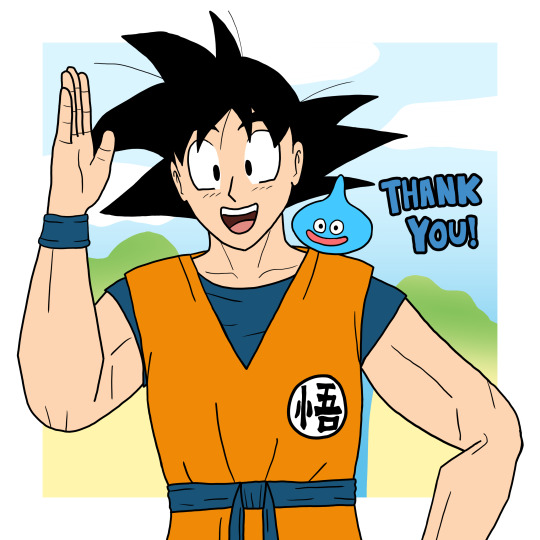
If it weren't for Akira Toriyama, I wouldn't be who I am today, and same goes for many others.
his own works and what he was involved in, inspired many other works, and those works inspired more.
Thank you for everything.
#ThankYouToriyama#son goku#goku#my art#slime#akira toriyama#dragon quest#dragon ball#dragon ball z#dbz
15 notes
·
View notes
Text
A lot of my art is heavily inspired by Toriyama’s work and especially Dragon Ball. It’s a series I’ve been so in love with ever since I was a child. Before I could read and write I knew how to “kamekameha” and I knew everything about Goku, Vegeta, Frieza, all that. It’s a series that has been with me for so long, and has helped me through so much, to challenge myself, to better myself. It was what my brothers often chat about to each other when they were young and constantly moving from state to state, experiencing big changes but atleast the one thing that always stayed the same was Dragonball would be airing on TV once they were home from school. It’s something that keeps us youthful and we can act like children again just by watching the series.
You’re never too old to have a wonderful journey.
I never knew Toriyama personally, but my heart aches seeing the comments that those who were close to him, and my prayers and best wishes go out to them and hope they can focus on healing from this sudden tragedy.
A lot of Toriyama’s works influence and created a staple in the lives of so many writers. Artists, developers, games, culture in itself. His works reminded us that life is full of whimsy and you’re never going to get too old to enjoy the small things, to have a laugh in the middle of the worst. They remind us how human we are, and as terrible a tragedy this is, folks around the world are coming together as one to celebrate the works he made, and how incredibly impactful these simple arts can be.
Life is too short to not enjoy the world around you. ♥️
Thank you Toriyama!



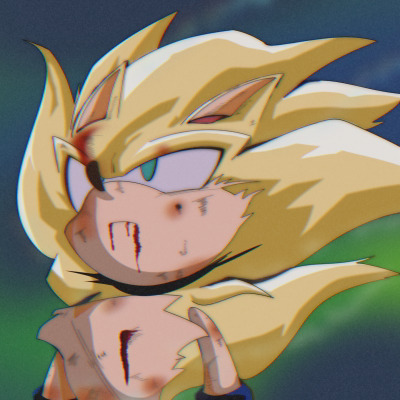


4 notes
·
View notes
Text

I know it's a little late but I wanted to make a drawing in honor of Toriyama, thank you very much Akira Toriyama for creating your works which inspired many people, rest in peace
#draw#drawing#painting#dibujo#dibujodigital#art#arte#artedigital#digitalart#digitalpainting#digitaldrawing#ThankYouToriyama#akiratoriyama#dragonball#dragonballz#dragonballfanart#krita#kritapainting#kritadrawing#huion#huiontablet
1 note
·
View note
Text
Remembering Akira Toriyama: The Legacy of a Manga Mastermind Who Transformed Pop Culture Forever

It is with heavy hearts that we mourn the sad passing of Akira Toriyama, a legendary Japanese manga artist and creator of some of the most beloved anime franchises in history. Toriyama passed away on March 1, 2024, at the age of 68, leaving behind a legacy of creativity and innovation that will be remembered for generations to come.
Toriyama was born on April 5, 1955, in Nagoya, Japan. He began his career as a manga artist in 1978, with his debut work "Wonder Island." However, it was his next work, "Dr. Slump," that really put him on the map. The series, which ran from 1980 to 1984, was a huge success and established Toriyama as a major player in the manga industry.
However, it was his next creation that would truly cement his place in pop culture history. In 1984, Toriyama began work on "Dragon Ball," a manga series that would go on to become one of the most successful and influential anime franchises of all time. The series, which follows the adventures of Goku and his friends as they battle powerful foes and search for the mystical Dragon Balls, has sold over 300 million copies worldwide and inspired countless spin-offs, video games, and merchandise.
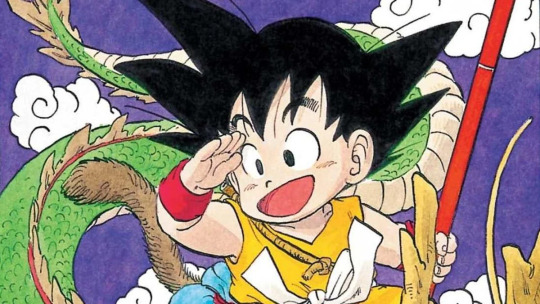
The world of "Dragon Ball" is filled with powerful warriors, colorful characters, and imaginative settings that have captured the hearts of fans around the world. The series is known for its intense action sequences, humor, and epic storyline that spans across multiple arcs. The story begins with Goku, a young boy with a monkey tail, who is discovered by a martial arts master named Master Roshi. Goku is trained in the art of fighting and sets out on a quest to find the seven Dragon Balls, which when brought together, can grant any wish. Along the way, he meets other warriors, including the powerful Vegeta, who becomes his rival and later ally.
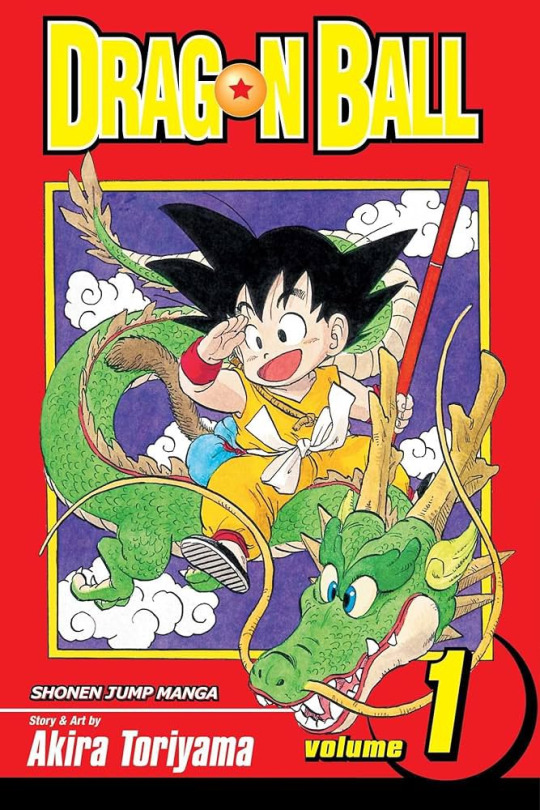
Toriyama's other notable works include "Sand Land," "Cowa!," and "Jaco the Galactic Patrolman." He was also involved in the creation of several Dragon Quest video games, providing character designs and story elements.
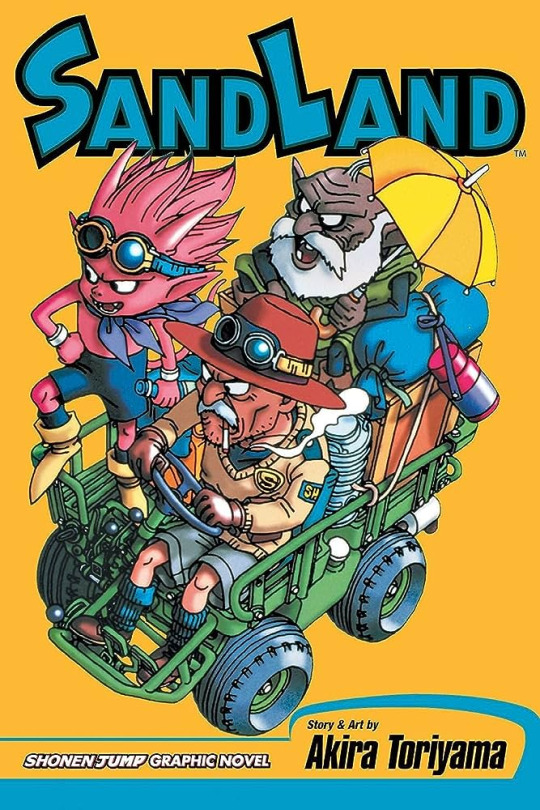
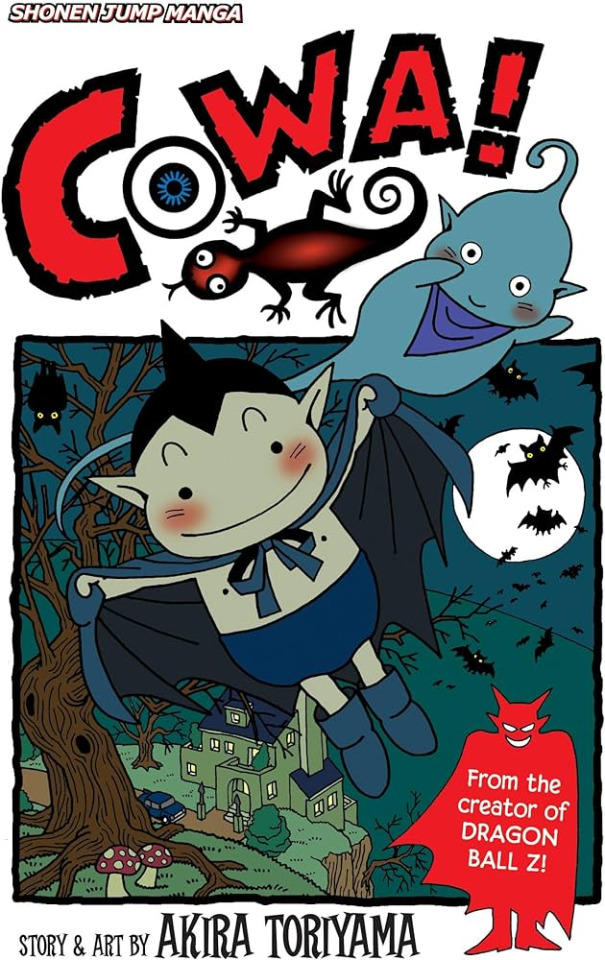

Despite his immense success, Toriyama was known for his humility and down-to-earth personality. He was beloved by fans around the world for his imaginative storytelling, colorful characters, and sense of humor. He will be deeply missed by his fans and the entire anime and manga community.
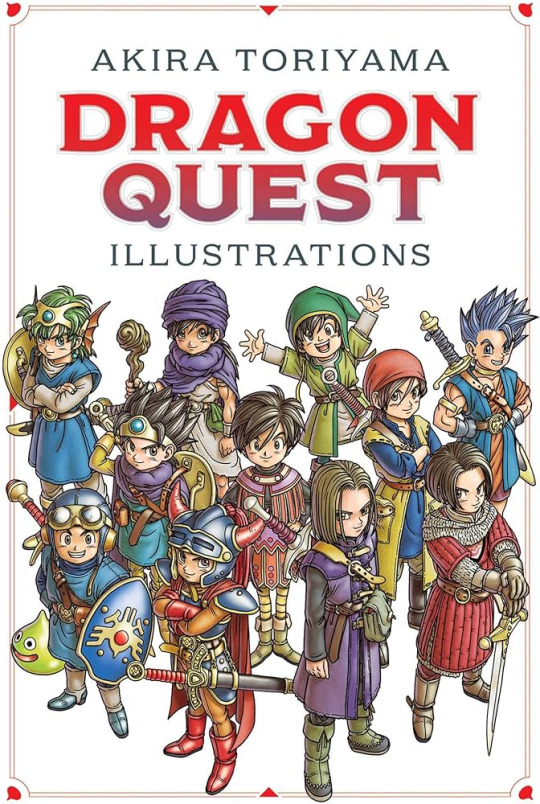
As we say goodbye to Akira Toriyama, we are left with a profound sense of loss and gratitude for all he gave us. His contributions to the world of anime and manga will never be forgotten, and his legacy will continue to inspire generations of creators to come.
RIP Legend, Akira Toriyama
#RIPToriyama#DragonBallCreator#AnimeLegend#MangaIcon#AkiraToriyamaForever#ThankYouToriyama#GokuForever#AnimeInspiration#PopCultureIcon
1 note
·
View note
Text

Farewell Sensei #ThankYouToriyama
322 notes
·
View notes
